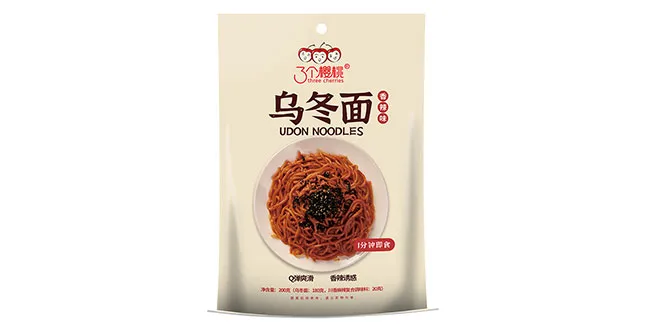Feb . 16, 2025 09:09
Back to list
italian pasta
When one thinks of Italian cuisine, the mind often conjures images of delicious pasta dishes. However, the world of Italian pasta is far more intricate than the popular plates of spaghetti and lasagna. Each variety is steeped in tradition, mirroring not only Italy's rich culinary heritage but also its adaptable nature in contemporary kitchens globally. Here's a deep dive into the versatile world of Italian pasta types, aiming to provide a fresh and authoritative perspective.
Short pasta shapes bring forward their own medley of offerings. Penne, with its characteristic tubes, works wonders with pulse-based sauces that benefit from capturing pieces in the ridges and hollow centers. Orecchiette, which means 'small ears,' hails from Puglia, earning its place with traditional accompaniments like broccoli rabe or sausage, its cupped form ideal for cradling chunky sauces or vegetables. On the comforting side of the pasta spectrum lies the deliciously stuffed variety. Ravioli, possibly the most versatile, can encase anything from traditional spinach and ricotta to more daring combinations such as truffled mushrooms. Tortellini, often filled with meats, embodies the culinary spirit of Bologna, typically immersed in a simple yet soul-soothing broth. An exploration of pasta types would be incomplete without mentioning regional specialties. Liguria brings forth trofie, primarily enjoyed with the region’s famed basil pesto. From Sardinia, fregola—a small, round pasta reminiscent of North African couscous—shows versatility, frequently finding its way into salads or soups, often beautifully paired with seafood for a touch of oceanic flair. Resurgence in ancient grains and gluten-free diets has ushered in a new era for pasta. Ancient grains like farro and spelt are increasingly woven into the pasta narrative, celebrated not only for their distinct nutty texture but also for their nutritional benefits. Gluten-free variants crafted from chickpeas, lentils, or brown rice have opened the doors to those previously unable to indulge, reinventing traditions without losing the authenticity of flavor. Maintaining the authenticity of Italian cuisine is a matter of honoring its roots while innovating with the techniques and ingredients of the modern world. This delicate balance ensures that pasta remains not just a staple, but a thriving canvas for culinary artistry. By embracing the diversity of pasta types and their pairings, both chefs and home cooks can create authentic experiences that echo the culinary traditions of Italy while adapting to present-day preferences and dietary needs.


Short pasta shapes bring forward their own medley of offerings. Penne, with its characteristic tubes, works wonders with pulse-based sauces that benefit from capturing pieces in the ridges and hollow centers. Orecchiette, which means 'small ears,' hails from Puglia, earning its place with traditional accompaniments like broccoli rabe or sausage, its cupped form ideal for cradling chunky sauces or vegetables. On the comforting side of the pasta spectrum lies the deliciously stuffed variety. Ravioli, possibly the most versatile, can encase anything from traditional spinach and ricotta to more daring combinations such as truffled mushrooms. Tortellini, often filled with meats, embodies the culinary spirit of Bologna, typically immersed in a simple yet soul-soothing broth. An exploration of pasta types would be incomplete without mentioning regional specialties. Liguria brings forth trofie, primarily enjoyed with the region’s famed basil pesto. From Sardinia, fregola—a small, round pasta reminiscent of North African couscous—shows versatility, frequently finding its way into salads or soups, often beautifully paired with seafood for a touch of oceanic flair. Resurgence in ancient grains and gluten-free diets has ushered in a new era for pasta. Ancient grains like farro and spelt are increasingly woven into the pasta narrative, celebrated not only for their distinct nutty texture but also for their nutritional benefits. Gluten-free variants crafted from chickpeas, lentils, or brown rice have opened the doors to those previously unable to indulge, reinventing traditions without losing the authenticity of flavor. Maintaining the authenticity of Italian cuisine is a matter of honoring its roots while innovating with the techniques and ingredients of the modern world. This delicate balance ensures that pasta remains not just a staple, but a thriving canvas for culinary artistry. By embracing the diversity of pasta types and their pairings, both chefs and home cooks can create authentic experiences that echo the culinary traditions of Italy while adapting to present-day preferences and dietary needs.
Share
Prev:
Next:
Latest news
-
The Wholesome Delight of Organic NoodlesNewsAug.15,2025
-
The Vibrant Delight of Spinach NoodlesNewsAug.15,2025
-
Savor the Spicy Delight of Hot Pot NoodlesNewsAug.15,2025
-
Savor the Chill with Irresistible Cold NoodlesNewsAug.15,2025
-
Indulge in the Authentic Delight of Udon NoodlesNewsAug.15,2025
-
Dive into the Delicious World of Cart NoodlesNewsAug.15,2025
-
Unlock the Delicious Potential of Yam NoodlesNewsAug.11,2025
Browse qua the following product new the we







